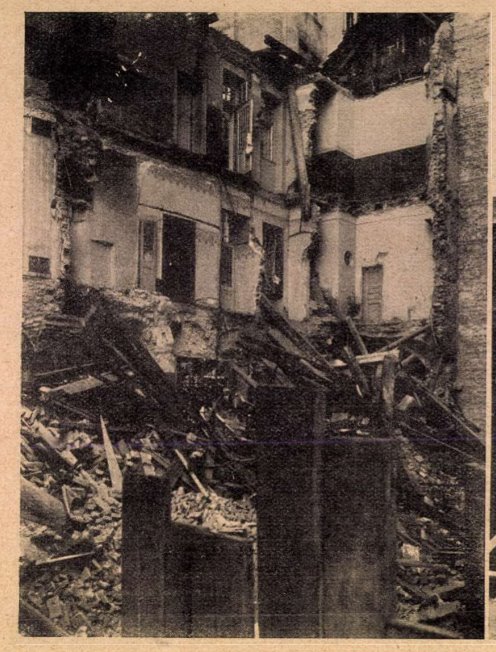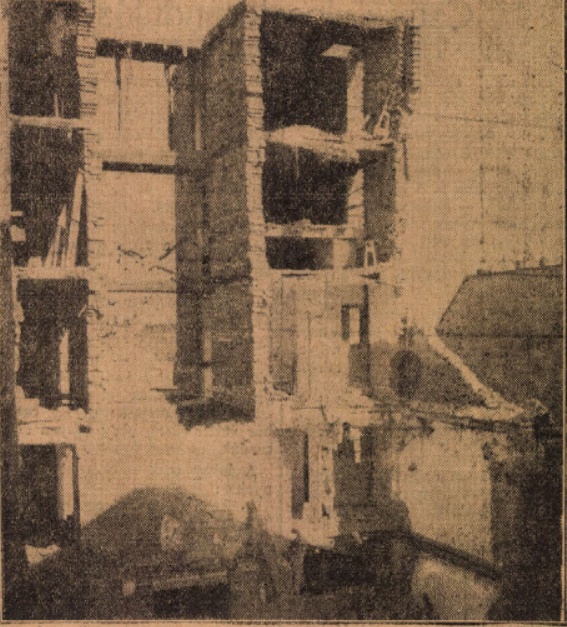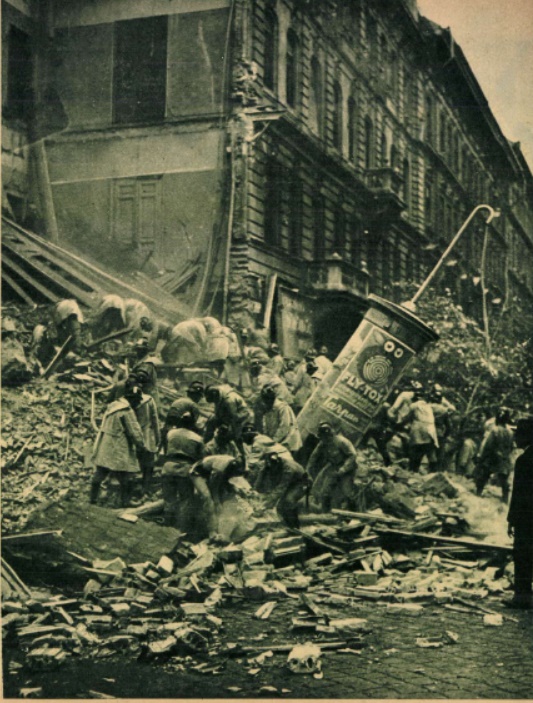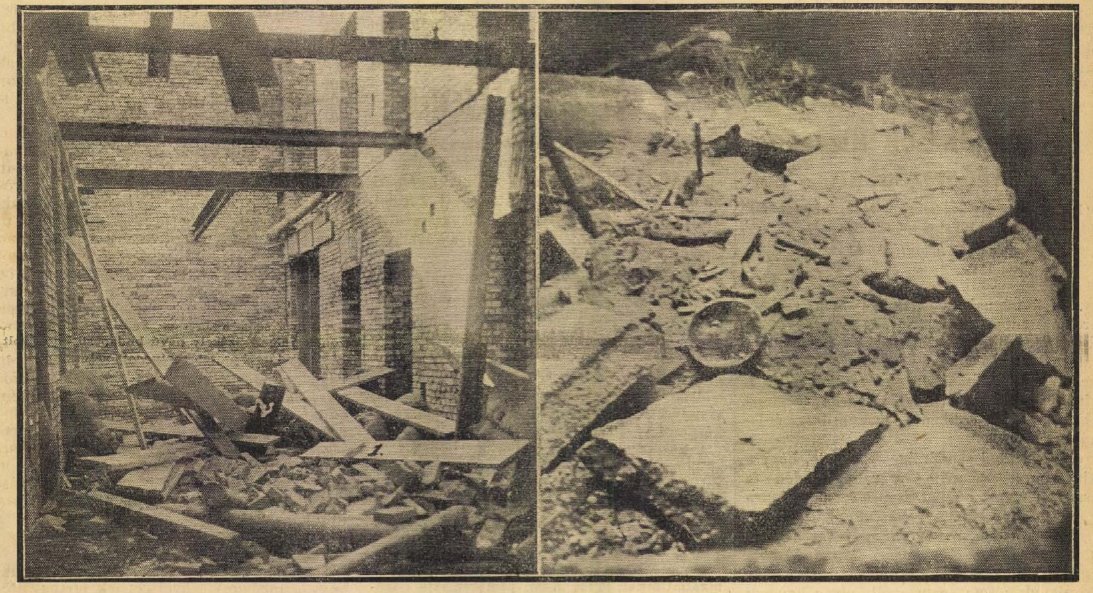The other day the roof structure of a house in Jókai Street in the 6th district collapsed. The four-story house was built in 1894, and the Terézváros Local Government sold its attic in the mid-2000s, which the real estate investors planned to build with 15 apartments. The investment started in September 2021, but a fire broke out on the roof a few weeks ago, and on 27 June the tragic accident occurred, the collapse, several people were injured when the debris fell on the street, doctors are still fighting for one of the injured.
Unfortunately, this is not a unique case, there have been countless similar cases in Budapest over the past century and a half. House collapses usually occur due to some kind of construction work or when the house is being demolished. Unfortunately, it is not uncommon for a house to collapse due to human error.
Let's take a look at the most egregious and shocking house collapses in the history of Budapest!
Construction - with collapse
The most common case, similar to the current tragedy, is when the accident occurs during construction. Although one of the most experienced architects, József Hild, designed the church in Lipótváros - today's St. Stephen's Basilica - its dome collapsed in 1868, almost a year after Hild's death. Since the collapse happened at 3 a.m. and the area was fenced off, luckily no one was injured. In the end, Miklós Ybl redesigned the dome and the entire building, which has been standing stable on Szent István Square in the 5th District ever since.

Traces of a house collapse on Kristóf Square on 10 August 1913 (Érdekes Ujság, 10 August 1913)
During construction, a house collapsed in 1874 also in Király Street. The experts concluded that the house was built differently from the plan, and that is why the attic collapsed on 20 October 1874.
The year 1911 was very unlucky in terms of house collapses in Budapest, the newspaper Világ reported on this in an extremely vivid way:
" The multitude of construction accidents, which are repeated in larger proportions at intervals of two or three weeks, and to a lesser extent two or three times a day, almost give the appearance of secret and criminal hands working to make the life of the construction worker as of the miner working in the most dangerous mine. Before that, the building that reached the roof flourished and was strapped up and the masons gathered for a joyous feast. Now! An ambulance is brought to the construction worker and he is treated to cumin seed soup at the Rókus [Hospital]. Hardly a house in Pest has been built lately without blood."
The author wrote the article after a tragic accident in Rákóczi Square in October 1911, when a six-story scaffolding collapsed during the plastering of a newly built house, burying countless people under it. Two died on the spot, and several others were hospitalized in critical condition. In the same year, in March, the ceiling of a villa under construction collapsed in Gyarmat Street, and two people were injured in the accident. Also in Zugló, there was a house collapse on 19 July 1911, where one person died and several others were injured. The workers predicted that there would be trouble, but the construction managers were adamant, and they had to hurry. In August of that year, a house under construction collapsed at the corner of Baross Street and Magdolna Street, there were signs before the collapse, one of the pillars cracked, and the area was evacuated in time, so fortunately no one was injured.

The collapsed house on Szent László Road (Kis Ujság, 18 July 1931)
The sloppy construction or the inadequate design later caused countless accidents, claiming a staggering number of eight victims, and the 1931 tragedy that happened on Szent László Road caused great indignation. In the afternoon of 16 July 1931, in the four-story semi-detached house being built here, the front facing the street swayed and fell off. The accident resulted in eight deaths and eight injuries. Among the latter was the 21-year-old young woman who was trapped by the debris but did not die. The trapped standing survivor was given milk through a rubber tube in order to last until they were dug out. This accident later had serious consequences, not only did the builder receive a prison sentence, but the tragedy contributed to the tightening of building regulations.
If an error slips into the demolition
Even during demolition, house collapses happened more than once in Budapest. For example, it claimed a fatality in 1910, when the old house bordered by Deák Ferenc Square - Deák Ferenc Street - Sütő (today Bárczy István) Street was demolished, the accident resulted in one death and five injuries, all of them workers working on the demolition.
Trouble also occurred during demolition in the unfortunate year 1911, when a wall collapsed early in the morning in the Pucher house on the corner of Költő and Petőfi Square (today's Március 15-e Square), luckily causing only minor damage. However, if the accident had happened a few minutes earlier, dozens of workers would have been buried under the rubble, because many workers were sleeping in the building.
Of course, accidents occurred much later during demolition, for example on 10 February 1994, the facade of a house under demolition in Kálmán Imre Street collapsed onto the street, causing minor injuries.
The scariest thing is if the building is inhabited
If someone has been living in a house for years and there is no natural disaster, in the rarest of cases, he expects the house to collapse on him. Fortunately, this happens quite rarely, but of course there have been examples of this. One of the biggest such accidents in Budapest occurred in 1936, when four floors of the building at 73 Rákóczi Road collapsed. According to the investigation, a previous fire and renovations in the building caused the disaster. The residents already reported weeks before the accident that there was a problem, the walls were cracking, but the experts sent by the owner, Magyar Általános Ingatlanbank Reszvénytársaság, found everything to be fine. Unfortunately, they were wrong.
A disaster also occurred in a residential building on 4 February 1994, when a part of an old, apartment building containing 31 flats collapsed in Ó Street almost without warning, causing damage to seven apartments. The accident was shocking because the history of many old apartment buildings in Pest in the 1990s was similar to that of Ó Street, i.e. some apartments from the former council tenement building were bought by the residents without being aware of the technical condition of the house and the apartment, and often the residents and tenants carried out renovations without a static plan being drawn up. The people of Budapest feared that many old buildings might be endangered in the near future. The fear seemed to be confirmed by another accident that year, in May, when a chimney fell on a house on Baross Square, from which 24 people had to be rescued.

The collapsed house on Rákóczi Street (Képes Pesti Hirlap, 24 July 1936)
The sad cases of the past decades
After the change of regime, many old, often neglected buildings came into private hands. Condominiums were created from the old council apartment buildings, and the apartments were often bought by residents who did not have the money to renovate the building, and even did not really know the obligations involved in maintaining an old condominium. The fears were actually unfounded, there were no serial disasters, Ó Street was a unique case in this respect. It is true that accidents did occur later, but not for the same reasons as in Ó Street, but often because the house or the neighbouring house was built or expanded in an unprofessional manner.
1996 was a black year in terms of house collapses, when there were a series of accidents, in March of that year the house at 20 Király Street was damaged due to unprofessional construction work next door, in July a house under renovation collapsed on Vámház Boulevard, in September a terrible tragedy occurred, two little girls were killed by a falling firewall on Szent László Road, in October the roof structure of a building under demolition fell off on Könyves Kálmán Boulevard, and in December there was an accident on Róbert Károly Boulevard.
It can also be dangerous when a foundation is built next to an already standing house, for this reason an accident occurred in 2001 in Víg Street in the 8th District, where the building collapsed due to the foundation work on the neighbouring lot.
Fortunately, house collapses are not common in Budapest these days, although a few weeks before the Jókai Street tragedy, on 16 May, there was also a collapse on Böszörményi Road in the 12th District: two floors of an office building collapsed during demolition, luckily no one was injured there. In most cases, the problem is caused by unprofessional construction or reconstruction - this is clear from past experiences and from the cases listed in our article. What exactly led to the fatal collapse at 1 Jókai Street will become clear once the investigations are completed, but unfortunately, the result will not provide much comfort for the injured.
Cover photo: The house collapse in Zugló in 1911 (Source: Népszava, 20 July 1911




































Hozzászólások
Log in or register to comment!
Login Registration